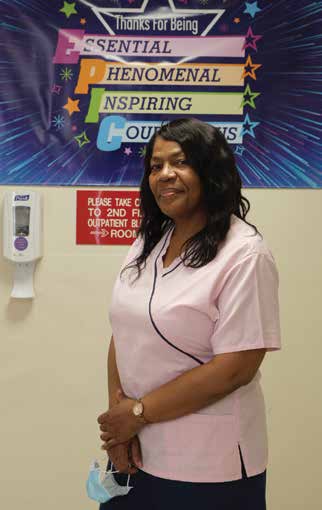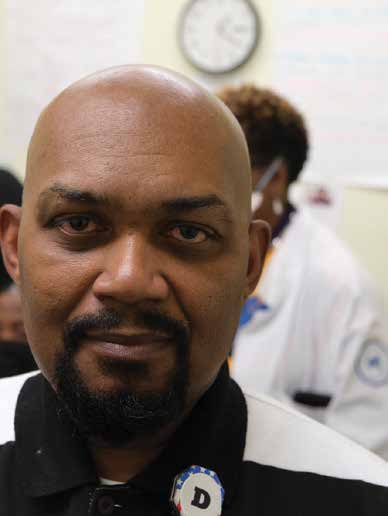1199ers Are Transforming Health Care In Brooklyn
February 23, 2021
One Brooklyn’s vision is addressing the disparities that have long plagued underserved communities.

United under the banner of the One Brooklyn Health System (OBHS), Kingsbrook Jewish, Interfaith, and Brookdale Medical Centers are ensuring and improving healthcare for Brooklynites in some of the borough’s highest-need areas. (Wyckoff Hospital was included in the original plan but has since left the project.) 1199SEIU members are playing a central role in the OBHS initiative by partnering with management, elected officials, and the community to win investment in primary and preventative healthcare and the preserve good paying jobs.
“I have lived in Brooklyn for 47 years and this could not have come at a better time,” says Brookdale Radiological Technologist Paulette Forbes, a long-time delegate and member of Brookdale’s Transformation Committee. “This system is our home when it comes to any kind of healthcare and with all the struggles we have been though, it’s incredible to reflect and see where we are today. Our hospitals are going to stay open and provide services that are much needed in our communities.”
(In addition to Forbes, the OBHS Overview Committee includes members Clandra St. Kitts, Genelle Jones, Delta Williams, Sybilla Daniel Douglas, Pauline James, Roxanne Cook- Cornelius, Jeanette Harper, Cherly Thorne-Bumpus, Denise St. Bernard, Ian Dawkin, and Lisa Forde Mentore.)

Central to this undertaking were labor committees, who made sure workers were heard, they were not displaced, and no wages, benefits or seniority were lost. To help with this, the institution-based committees established a resource center, where members could bring questions and concerns.
“I felt an obligation and responsibility to make sure the transformation takes place in a timely manner and in the best interests of 1199 members,” says Patient Care Tech Ian Dawkins, a Kingsbrook Jewish Transformation Committee member.
OBHS is rooted in the 2005 fight to save Crown Heights’ St. Mary’s Medical Center. The loss of that safety net hospital was emblematic of the longstanding, fatal neglect of institutions serving poor and minority communities. It also highlighted the constellation of systemic disparities that have historically plagued the same neighborhoods.
“The need for a new approach became obvious after an epidemic of hospital closures,” says, 1199SEIU VP Bruce Richard, who was among the leaders of the St. Mary’s fight. “After about 10 hospitals closed [throughout New York State], we did a study with our partners at the Massachusetts Institute of Technology CoLab around the social determinants of health and civic infrastructure.”

Fast forward a decade and a half, countless hours of tireless work by 1199SEIU committee members and their partners, and $700 million plus capital investment for new projects and investment operating cost subsidies. One Brooklyn is the fruition of years of dedicated activism, says Forbes.
“I was very privileged to be part of this work,” she says. “It all goes back to our awesome Union leadership and our strength. Because of that we were able to win language that protects our members and determine what the One Brooklyn Health System will be to best serve our neighbors and our patients.”
- 1199 Magazine | January / February 2021

